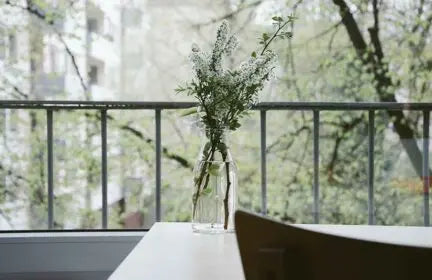We have previously seen that algae can be found in our homes both in construction (facades, painting), in cosmetics, and in everyday objects thanks to bio plastics. These innovations represent simple and ecological solutions to current environmental constraints.
Today, we invite you to get out of the buildings to discover the uses of algae outdoors!
Read also: Understanding algae
MICRO ALGAE IN AND ON OUR ROADS
An unexpected use of algae is in the manufacture of road surfaces. Indeed, by artificially mimicking the natural conditions for the appearance of oil on microalgae residues, it is possible to obtain a material close to bitumen. The chemical characteristics of the product obtained are different from that obtained from petroleum but the physical characteristics are identical (resistance and flexibility). For now, the tests carried out in the laboratories are conclusive, and ensure the good performance of this bio-asphalt.
It is a low-polluting production which captures atmospheric CO2 and which represents an ecological and viable response to sustainable development issues. This serious alternative to oil, however, still requires development in order to be usable on a larger scale.
On the other hand, thanks to their high concentration of lipids, about twenty species of algae can produce biofuel , such as spirulina for example. Indeed, some contain more than 50% of their dry weight in lipids that can be recovered through a few simple chemical reactions. By mixing this algae oil with alcohol and thanks to specific chemical conditions, it is possible to obtain algofuel. Environmentally friendly , it has a negative carbon footprint . Currently, the high price (€10/l) of this synthesis is a brake on the large-scale production of these liquid biofuels, but research is underway to limit these costs and develop the technology as quickly as possible. However, algae already make it possible to run certain vehicles in indirect use, in the form of biogas. In Chiclana de la Frontera (southern Spain), algae are added to the city's wastewater to absorb CO2 from the waste and release O2 . The oxygen allows bacteria to develop and degrade the organic matter in the water. The clean water is separated from the microalgae and residual matter. The microalgae are then sent to a tank where their degradation creates methane, a gas that can be used as fuel .
Read also: Algae and their many uses
MICROALGAE IN THE URBAN LANDSCAPE
Micro algae are now also part of the decor in central Paris in carbon sinks. Indeed, since July 2017, a new type of Morris column has appeared at the Alésia crossroads. Polluted air (exhaust gases, heavy metals, etc.) enters the column filled with microalgae. Thanks to photosynthesis, the air stripped of its CO2 comes out clean, loaded with O2 and freed of its heavy metals. Then when algae growth no longer allows optimal photosynthesis, the system is drained and refilled. The recovered biomass is sent to a wastewater treatment plant and transformed into biomethane, used for district heating.
And like a 1m Morris column3 only allows as much air as 100 trees to be filtered, this makes it possible to envisage large-scale depollution which is rather easy to implement.
Read also: Microalgae enable space travel
IN THE LIGHT OF MICROALGAE
Certain microalgae, dinoflagellates, are capable of bioluminescence when they are agitated. It is the presence of these organisms with astonishing properties that allows certain lagoons to light up at night in the event of mechanical stimuli. This capacity, currently used on a small scale in luminescent toys, could ultimately be one of the keys to the fight against light pollution. Indeed, the ambition of developers in this area is to offer an alternative to current energy-intensive lighting, allowing ambient lighting of building facades, shop windows or even urban furniture, the light emitted by these organisms being soft and non-polluting.
All these uses requirelarge quantities of algaeproduced in the open ocean or in bioreactors from marine or freshwater strains. Algae cultures are renewable, sustainable, ecological but expensive to produce. Research must be carried out to limit these costs to allow greater use of this raw material which seems to be a viable solution to limit the depletion of natural resources.
Read also: Algae in the case of a vegan diet




